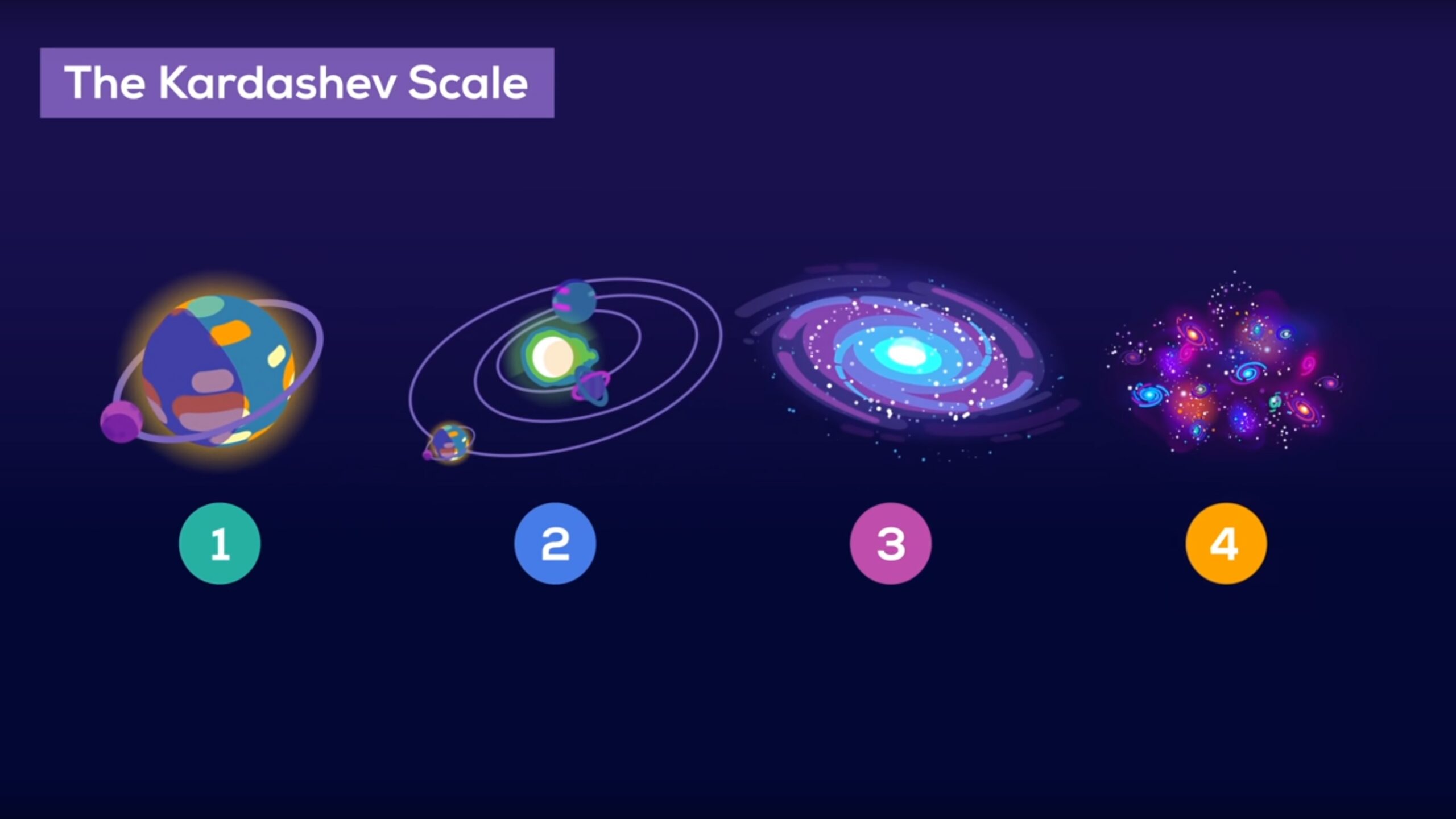The Kardashev Scale

Have we all known at this point that the universe is bigger than we can actually measure. This fact comes with a lot of other possibilities and curiosities. Here is one of them.
Nicolai Kardashev was a Soviet and Russian astrophysicist, Doctor of Physical and Mathematical Sciences, and the deputy director of the Astro Space Center of PN Lebedev Physical Institute of the Russian Academy of Sciences in Moscow. He would be known as the man who created a scale capable of measuring the evolution of an entire civilization with a 3 levels scale.

Type 1 Civilization:
A type one civilization can fully extract and use all the energy provided or reach its home planet without conflicts and degradation of the world. Is right now, the closest type that human civilization got so far.
Type 2 Civilization:
A type 2 civilization is the one that can fully extract and use all the energy radiated from its own large star. This idea includes a whole new concept of extreme value for the current scientific community. The Dyson sphere.
A Dyson sphere is a theoretical concept of a sphere that can surround the solar surface with technology capable of absorbing all radiation and transforming it into usable energy to supply any need of a civilization, now of type 2 of Kardachev Scale of evolution.
At this point, humankind should be able to travel within the solar system without any problems, with space exploration being focused on further systems and galaxies.
Type 3 Civilization(Milkway):
As a “final” step for this scale, a civilization type 3 is the one in possession of energy at the scale of its own galaxy. All the energy generated in all locations, can be used as one solid interconnect organism.
It’s the least predictable of the three types. The scale can predict the average energy consumed and the source of it but it’s nearly impossible to know how this goal can be achieved by a civilization.
In an attempt to see the whole picture of this type three scale, we can compare the entire human civilization (type 3) with a colony of ants (actual human type) .
For the division of civilization into three stages, a calculation is performed in which the variable is the amount of energy consumed by the civilization analyzed in watts. With this in mind, lets take a look on how much energy wich one is cherished.
- TYPE – 1: 10^16 and 10^17 Watts
- TYPE – 2: 4×10^26 Watts
- TYPE – 3: 4×10^37 Watts
How do we calculate this?
To reach all those predictions, the Kardashev scale uses a simple math equation to calculate it for us:
K = log10 P – 6/ 10
K = Civilization’s Kardachev rating
P = The power it uses, in watts
With this equation, we can predict that humankind is about 0,7 on Kardachev Scale with global conflicts and natural disasters being currently the only obstacles of getting a status Type 1.
There is also the concept of civilization of type 4, but because it is something very abstract in view of our reality, we do not need to worry about predicting it yet
Have you ever seen Star Wars?
The famous Star Wars saga, first released in theaters in 1977 with the original trilogy, is an excellent example of an entire civilization at level two, or very close to it. This is because it’s a mixed civilization between species from different places of a single galaxy that is connected by a vast network of systems. Spacecraft trips at the speed of light are already a reality and are the main means for moving between the vastness of this fictitious galaxy. All the energy and materials needed to maintain the context seen throughout the movies happen through the exploration of the entire galaxy and its resources, wich categorizes, in Kardachev Scale, a civilization of type 2. looking forward to reviewing the movies with this new optics?

What’s your opinion on the subject?
We are still too primitive to talk about how or when things will change for us to evolve in the scale of Nicolai, but it’s certainly that our generation has a crucial role in this process. If we look back on our history, we will see that humans are evolving exponentially since our first industrial revolution, but at what cost? Too much conflicts for resources, food distribution and other social problems are the current only limitant for us to achieve the ultimate scale evolution. What can you do to help us getting it?
References:
Author: Bernardo Gonze